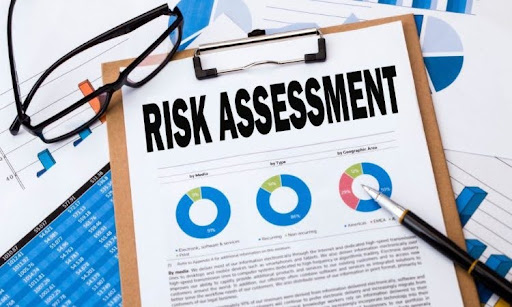Risk assessment is a systematic process that identifies potential hazards or risks of a business process. Risk assessment is a key decision-making tool to predict the possible risk of any business process. It allows decision-makers to determine which steps need to be considered for controlling the risk. Risk assessment involves identification of risk, risk management, and review of the outcome.
Process of Risk Assessment
- Identify the risk associated with any business process. Determine the risk management strategy. This step involves understanding the nature, source, and potentiality of identified risk. SWOT and PESTLE are the useful tools in predicting the risks associated with any business.
- After identification of risk comes evaluation of risk by estimating the probability of risk and severity of consequences. The risk register matrix is used for risk rating of identified hazards.
- Then it comes to controlling the risk according to the priority of risk. This step of evaluation helps to reduce the risk of hazards.
- The next step of risk assessment is recording the findings with a detailed description of the risk identified, an explanation of the controlling measures taken, and what conclusions are derived from the assessment.
- The final step of risk assessment involves the recommended controls and changes required further for smooth conduction of business processes.
Risk assessment tools and techniques
The risk assessment follows mainly two techniques. Quantitative techniques and qualitative techniques. Qualitative techniques are usually applicable to all business functions. It is easy to apply and does not require mathematical application. However, the quantitative techniques consider relevant risk scenarios with detailed information that helps in decision-making. The quantitative tools widely popular for risk assessment are as below.
- HAZOP (Hazard and Operability) is a systematic and structured risk assessment technique. It identifies potential hazards and performs operability analysis. This structured procedure helps in exploring safety risks and inefficiencies in existing business operations.
- Monte Carlo analysis performs the risk assessment by optimistic, most likely, and pessimistic estimates and predicts expected business costs and project completion dates.
- FMEA (failure mode and effective analysis) is a systematic approach to identify and prioritize potential failures that further helps in the effective decision-making process.
- Fault tree analysis is a risk assessment that is an effective safety analysis and probabilistic assessment. It estimates the risk, probability of failure, and impact of risk on business processes.
- LOPA (Layer of Protection Analysis) is a risk assessment method that estimates the frequency of an initiating event, independent protection layers (IPL), and the harmful impact of the event.
Risk assessment is a systematic process that helps businesses like Ingenero by identifying potential risks and helps in building risk management strategies. It ultimately reduces the risk in the future. Moreover, it generates awareness about the potential hazards that may cause severe impact on the organization’s performance.
Frequently Asked Questions
How often should a business conduct a risk assessment?
A business should at least run the risk assessment once a year.
What is the new technology for risk assessment?
Artificial intelligence or machine learning is the advanced technology integrated with risk assessment techniques for evaluating more accurate results.
Why is risk assessment necessary?
Risk assessment is necessary for improved decision-making and building strong risk management against unprecedented events.






